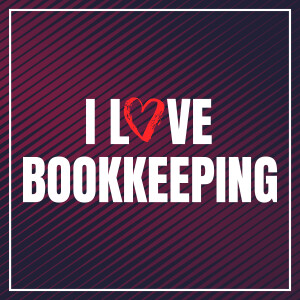
Kirsten took an accounting class in high school many years ago and she really enjoyed it. She eventually dropped out of college where she was studying accounting and became a mother. She was a stay-at-home mom for 18 years and tried a number of business ideas but none of them really resonated. She eventually got an email from Ben about becoming a bookkeeper, ended up on one of his webinars and ultimately took the course.
[7:40] Kirsten currently has four clients but has had up to nine at one time. Some of them Kirsten decided to fire and some have gone in other directions.
[9:00] Time management was Kirsten’s first major challenge; homeschooling nine kids can make working from home fairly difficult. Being intentional with her time has been very important.
[11:30] When it came to getting clients, putting out content that would get someone interested in what Kirsten was offering without being too sales-y was tough for her. Her first client was a friend that she had known for nearly 20 years who owned a business. Three years later, just talking to people and word of mouth is still Kirsten’s primary means of getting new clients.
[15:30] Kirsten wants to ultimately live someplace warm and run her business remotely. She wants to be able to travel and enjoy her family and that means she will need additional help taking on tasks within her business.
[18:35] One of the keys to serving clients is making sure you are serving a particular niche. When Kirsten first started her business, her niche was sustainable agriculture. She marketed to them for nearly a year without getting any clients so she switched her focus. Her first client was in the tourism niche so she started trying to target them instead and later pivoted to cannabis businesses. The cannabis industry is currently like the wild, wild west and bookkeepers need to know so much in order to do the job correctly so that proved a little too difficult to break into. Now, Kirsten is sort of nicheless and isn’t sure which direction to go.
[25:15] Marketing is about three elements: knowing your market, knowing your message to that market, and the media. We get hung up on “industry” being the same as “niche,” but that isn’t necessarily the case.
[28:00] Figuring out which niche to target should be a priority, but it’s something that will happen once Kirsten starts picking up clients and understanding which ones align with her vision for her business. Focus on the relationships first.
[30:40] It’s important to go after people that we truly enjoy serving. When you’re just getting started, it’s natural to work with nearly anyone that is willing to give you money, but eventually you want to hone in and map out who your ideal customer is. Start writing down characteristics that describe them. When you understand your avatar it will make your marketing easier because you can speak directly to them.
[36:10] Slow down the process of bringing on a client. You should try to get a feel for what it’s going to be like working with them before you bring them on board. You are going to be emotionally invested in this relationship so take your time.
[41:15] Start to find the pattern. Think of the relationships you do have and the qualities that you like in other people. You are not about serving the masses, you are becoming a trusted advisor to a relatively small number of clients that you should have deep relationships with. If you build your relationships on a human level, the bookkeeping becomes a natural extension.
[46:00] You are probably not doing any marketing because you feel stuck. Remember, it’s about building a rapport with the people you want to serve. Find the groups you want to serve and become a contributor, give them value and use every medium at your disposal.
[49:00] A halfway decent message to the right market will do well, a great message to the wrong market will fall on its face every single time. Go to where your people hang out.
[52:25] The Irresistible Selling Statement is important, but that will come from understanding what clients Kirsten resonates with. She needs to sit down and figure out the characteristics of the people she wants to work with, find out where they spend their time, and start listening and contributing.
Link mentioned: The Customer Avatar Worksheet
More Episodes
 2020-04-07
2020-04-07
 2020-03-31
2020-03-31
 2020-02-18
2020-02-18
 2020-02-11
2020-02-11
 2020-02-04
2020-02-04
 2020-01-07
2020-01-07
 2019-12-24
2019-12-24
Create your
podcast in
minutes
- Full-featured podcast site
- Unlimited storage and bandwidth
- Comprehensive podcast stats
- Distribute to Apple Podcasts, Spotify, and more
- Make money with your podcast
It is Free
- Privacy Policy
- Cookie Policy
- Terms of Use
- Consent Preferences
- Copyright © 2015-2024 Podbean.com





